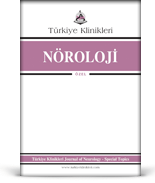Uzun yıllar boyunca MS'nin optik sinirler ve spinal kordu seçici olarak etkileyen şiddetli bir varyantı olarak kabul edilen nöromiyelitis optikanın (spinal amorozis, optiko-spinal MS, Devic hastalığı), aquaporin-4 (AQP4) antikorunun 2004 yılında keşfi ile birlikte MS'den farklı bir hastalık olduğu anlaşılmıştır. Optik nörit ve miyelitin yanı sıra belirli klinik tabloların da eklenmesiyle 2007 yılında NMOSD tanımı yapılmış ve 2015 yılında NMOSD tanı kriterleri geliştirilmiştir. NMOSD şemsiye tanımı altında toplanan benzer fenotipteki ve AQP4-IgG'nin negatif olduğu bazı hastalarda miyelin oligodendrosit glikoprotein antikoru (MOG-IgG) pozitif bulunmuş ve MOGAD ayrı bir hastalık olarak sınıflandırılmıştır. 2023 yılında ise MOGAD tanı kriterleri oluşturulmuştur. Ancak hâlen her iki antikorun da negatif olduğu ve seronegatif NMOSD olarak değerlendirilen heterojen bir hasta grubu bulunmaktadır. NMOSD ve MOGAD, farklı antijenik hedefleri olan, antikor aracılı otoimmün santral sinir sistemi hastalıklarıdır. Hedef antijenler; AQP4 pozitif NMOSD'de astrosit son-ayaklarındaki AQP4 su kanalları, MOGAD'da ise oligodendrositlerin miyelin kılıfı tabakasının en dışında yer alan myelin-oligodendrosit glikoproteindir. Her iki hastalık, klinik ve göruntu ̈ leme ̈ bulgularındaki benzerliklere karşın patofizyolojileri, atak riski ve özürlülük gelişimini içeren prognozları ve tedavi yaklaşımlarındaki farklılıklar ile ayrışmaktadır.
AQP4 antikorunun keşfi, aynı zamanda, otoimmün astrositopatiler kavramının gelişmesine neden olmuştur. Astrositlerin iskelet yapısında yer alan glial fibriler asidik proteine (GFAP) karşı gelişen otoantikorların saptanmasıyla, 2016 yılında otoimmün GFAP astrositopatisi tanımlanmış ve AQP4 pozitif NMOSD ile birlikte otoimmün astrositopatilerin kapsamında yer almıştır.
Gelecekte, tanısal yöntemlerdeki gelişmelerle birlikte; seronegatif NMOSD'de yeni otoantikorların bulunması, miyelinin farklı antijenik hedeflerine yönelik antikorların ve MOG antikorlarının farklı alt tiplerinin tanımlanması ile yeni sınıflandırmalara gidilmesi, otoimmün astrositopatilere yeni hastalıkların eklenmesi olası görünmektedir. Öte yandan, hastalıkların immünopatogenetik mekanizmalarının daha iyi anlaşılması ile birlikte hedefe yönelik özgün tedavi seçenekleri de artacaktır.
NMOSD, otoimmün GFAP astrositopatisi, MOGAD, akut dissemine ensefalomiyelit (ADEM) ve santral sinir sistemini etkileyen inflamatuar hastalıklardan nörosarkoidoz, nöro-Behçet sendromu ve görece yeni tanımlanan bir hastalık olan CLIPPERS, bu kitabın konularını oluşturmaktadır. MS ile olduğu kadar birbirlerinin ayırıcı tanısında da yer alan bu hastalıkların kimi zaman örtüşen klinik ve görüntüleme bulgularının tanınması, uygun yöntemleri seçerek doğru tanının konulması ve hastalık ilişkili özürlülüğü önlemek açısından zamanında tedaviye başlanması önemlidir.
Değerli meslektaşlarımın özenli çalışmalarıyla hazırlanan bu kitabın, okuyucular için faydalı bir kaynak olmasını diliyorum.
Prof. Dr. Hayat GÜVEN
Editör
Sağlık Bilimleri Üniversitesi Tıp Fakültesi, Ankara Etlik Şehir Hastanesi, Nöroloji AD, Ankara,Türkiye
For many years, neuromyelitis optica (historically referred to as spinal amaurosis, optico-spinal MS, or Devic's disease) was considered a severe variant of MS that selectively affects the optic nerves and spinal cord. However, the discovery of aquaporin-4 (AQP4) antibodies in 2004 revealed that it was a distinct entity separate from MS. With the addition of certain clinical presentations along with optic neuritis and myelitis, NMOSD was defined as a seperate disease in 2007. Subsequently, diagnostic criteria for NMOSD were established in 2015. Among patients with similar phenotypes grouped under the umbrella term NMOSD, a subset who were negative for AQP4-IgG were found to be positive for myelin oligodendrocyte glycoprotein antibody (MOG-IgG), and MOGAD was subsequently classified as a separate entity. Diagnostic criteria for MOGAD were introduced in 2023. However, there remains a heterogeneous group of patients who test negative for both antibodies and are evaluated as seronegative NMOSD. NMOSD and MOGAD are antibody-mediated autoimmune diseases of the central nervous system that target distinct antigens. In AQP4-positive NMOSD, the target antigen is the AQP4 water channels located on the astrocytic end-feet, while in MOGAD, the target is myelin oligodendrocyte glycoprotein, situated on the outermost layer of the myelin sheath of oligodendrocytes. Despite similarities in clinical and imaging findings, both diseases are distinguished by in their pathophysiology, prognosis including the risk of relapses and disability progression, and therapeutic approaches.
The discovery of AQP4 antibodies has also led to the conceptual development of autoimmune astrocytopathies. With the detection of autoantibodies against glial fibrillary acidic protein (GFAP) in skeletal structure of astrocytes, autoimmune GFAP astocytopathy was defined in 2016 and included in the scope of autoimmune astrocytopathies along with AQP4 positive NMOSD.
In the future, advances in diagnostic methods may lead to the identification of new autoantibodies in seronegative NMOSD, and new classifications will be made with the discovery of antibodies targeting other antigenic components of myelin and identification of different subtypes of MOG antibodies. Additionally, new diseases may be added to the group of autoimmune astrocytopathies. On the other hand, with a better understanding of the immunopathogenic mechanisms of these diseases, targeted specific treatment options will also increase.
This book addresses NMOSD, autoimmune GFAP astrocytopathy, MOGAD, acute disseminated encephalomyelitis (ADEM), and other inflammatory diseases affecting the central nervous system, including neurosarcoidosis, neuro-Behçet syndrome, and CLIPPERS. Recognizing the sometimes overlapping clinical and imaging features of these diseases, which are important for differentiating them from one another and as well as from MS, is essential. Timely initiation of treatment, guided by accurate diagnosis using appropriate methods, is crucial for preventing disease-related disability.
I hope that this book, prepared with the meticulous efforts of my esteemed colleagues, will be a valuable resource for its readers.
Prof. Dr. Hayat GÜVEN
Editor
University of Health Sciences Faculty of Medicine, Ankara Etlik City Hospital, Department of Neurology, Ankara, Türkiye







.: İşlem Listesi